Rule of nines for burn patients. Comprehensive Guide to Understanding and Treating Burn Injuries in Adults: Rule of Nines Explained
What is a burn evaluation? How are the different types of burns classified based on the depth of the injury? Explore the rule of nines for estimating the percentage of total body surface area (TBSA) burned in adults. Get a detailed overview of burn assessment and treatment.
Defining Burn Injuries: Types and Severity
Burn injuries can range in severity from mild to life-threatening, and their classification is based on the depth of the tissue damage. There are three main types of burns:
First-Degree Burns
First-degree burns affect only the outermost layer of the skin, known as the epidermis. These are the least serious type of burn, causing pain and redness but no blisters or open sores. Sunburns are a common example of first-degree burns, and they usually heal within a week with at-home treatments like cool water soaking and over-the-counter pain medications.
Second-Degree Burns
Also called partial-thickness burns, second-degree burns affect both the epidermis and the middle layer of the skin, the dermis. These burns can cause pain, redness, and blisters. Some second-degree burns can be treated with antibiotic creams and sterile bandages, while more serious cases may require a skin graft procedure to aid healing and prevent scarring.
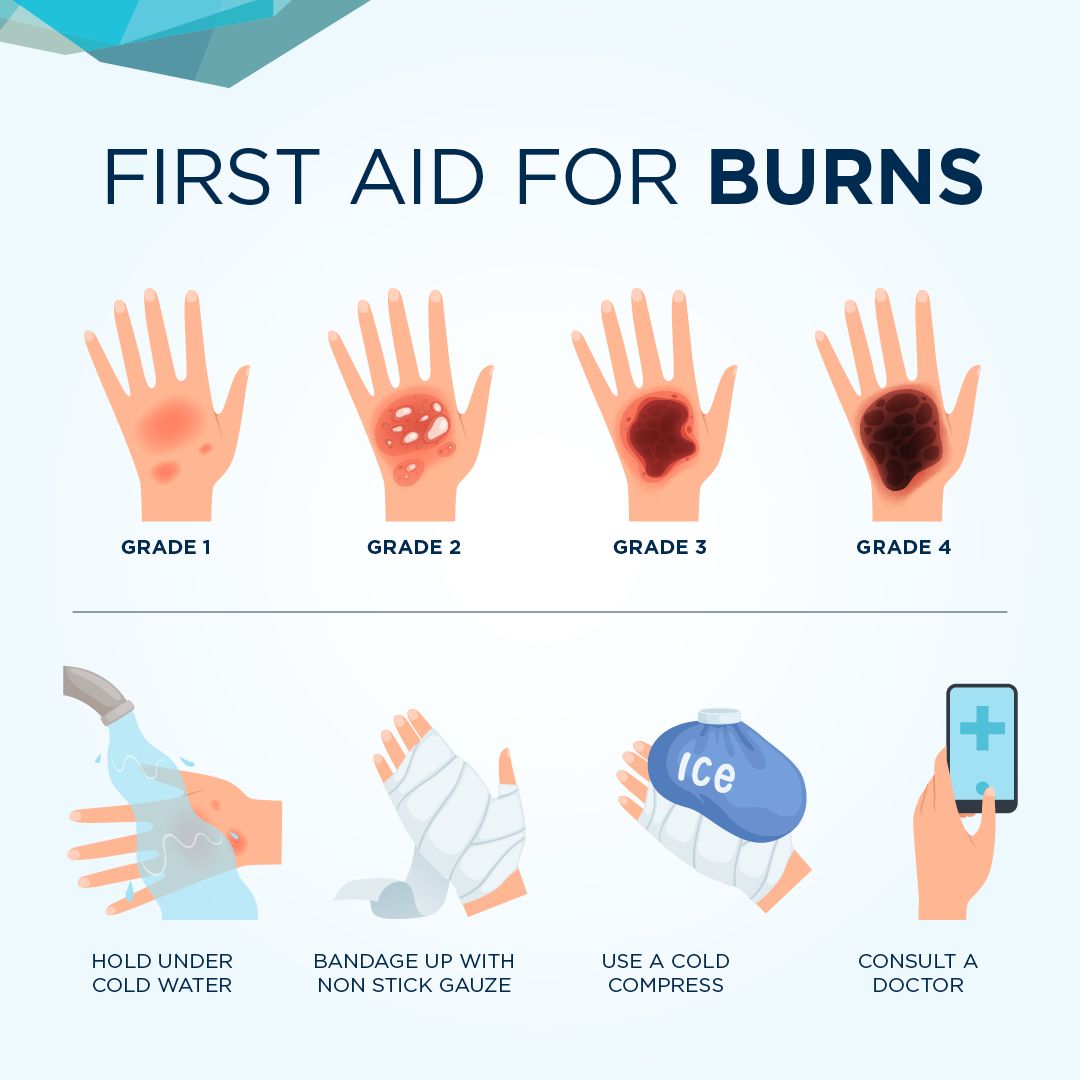
Third-Degree Burns
Third-degree burns, or full-thickness burns, are the most severe type. They affect all three layers of the skin: the epidermis, dermis, and the innermost fat layer. These burns can severely damage hair follicles, sweat glands, nerve endings, and other skin tissues. Third-degree burns often require skin grafts and can lead to serious complications and scarring.
Assessing Burn Severity: The Rule of Nines
During a burn evaluation, healthcare providers use a method called the “rule of nines” to estimate the percentage of total body surface area (TBSA) that has been burned. This rule divides the body into sections, each representing 9% or 18% of the TBSA.
Breakdown of the Rule of Nines
- Head and neck: 9% of TBSA
- Each arm: 9% of TBSA
- Each leg: 18% of TBSA
- Anterior trunk (front of the body): 18% of TBSA
- Posterior trunk (back of the body): 18% of TBSA
It’s important to note that the rule of nines is not used for estimating burn injuries in children, as their body proportions differ from adults. In such cases, healthcare providers may use a Lund-Browder chart, which provides more accurate estimates based on the child’s age and body size.

Classifying Burn Injuries: Minor, Moderate, and Severe
In addition to the degree of burn, healthcare providers also categorize burn injuries as minor, moderate, or severe:
Minor Burn Injuries
Nearly all first-degree burns and some second-degree burns are considered minor. While they can be painful, these burns rarely lead to complications and can often be treated at home with basic first aid.
Moderate Burn Injuries
Some second-degree burns and all third-degree burns are classified as moderate or severe. These burns cause serious health problems and may require hospitalization, specialized treatment, and even life-saving interventions.
Severe Burn Injuries
Severe burns are the most serious type, often leading to life-threatening complications and requiring immediate emergency medical attention. These burns typically cover a large area of the body and can result in systemic issues such as dehydration, breathing difficulties, and life-threatening infections.
Conducting a Burn Evaluation
During a burn evaluation, healthcare providers carefully examine the wound and use the rule of nines or other methods to estimate the percentage of TBSA that has been affected. This information is crucial for determining the appropriate treatment approach and ensuring the best possible outcome for the patient.
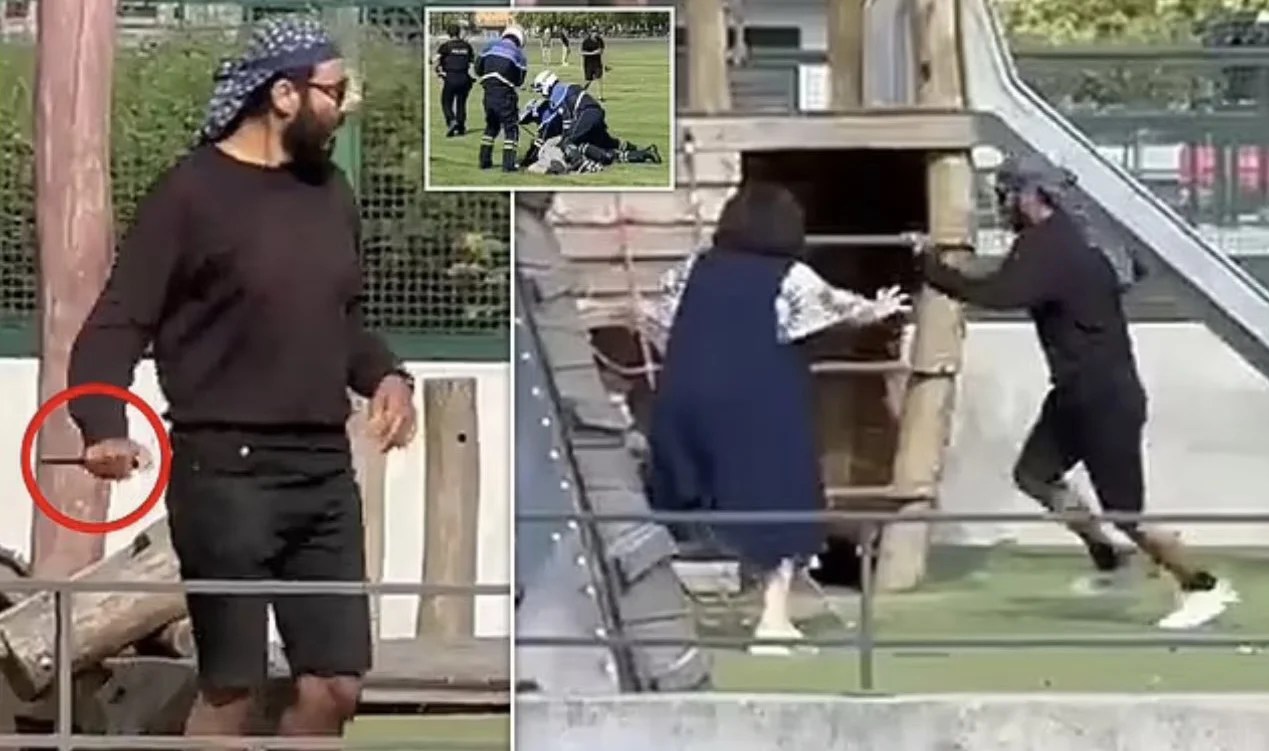
Estimating TBSA with the Rule of Nines
The rule of nines divides the body into sections, each representing a percentage of the TBSA. This allows healthcare providers to quickly assess the extent of the burn and guide their treatment decisions accordingly.
Seeking Emergency Care for Serious Burn Injuries
If you or someone you know has sustained a moderate or severe burn injury, it is essential to seek immediate emergency medical attention. These types of burns can lead to life-threatening complications and require specialized treatment to prevent long-term consequences.
When to Seek Emergency Care
Seek emergency care if the burn covers a large area of the body, involves the face, hands, feet, or genitals, or if the individual is experiencing symptoms like severe pain, blistering, or difficulty breathing.
Conclusion
Understanding the different types and severity levels of burn injuries is crucial for providing appropriate and timely care. The rule of nines is a valuable tool used by healthcare providers to assess the extent of a burn and guide treatment decisions. By familiarizing yourself with the information presented in this comprehensive guide, you can be better prepared to recognize and respond to burn emergencies effectively.

Burn Evaluation: MedlinePlus Medical Test
What is a burn evaluation?
A burn is a type of injury to the skin and/or other tissues. The skin is the largest organ in your body. It is essential for protecting the body against injury and infection. It also helps control body temperature. When skin is injured or damaged by a burn, it can be very painful. Other health problems from a burn may include severe dehydration (the loss of too much fluid from your body), breathing troubles, and life-threatening infections. Burns can also cause permanent disfigurement and disability.
A burn evaluation looks at how deep in the skin a burn has gone (degree of burns) and how much of the body’s surface area has been burned.
Burns are most often caused by:
- Heat, such as fire or hot liquids. These are known as thermal burns.
- Chemicals, such as acids or detergents. They can cause burns if they touch your skin or eyes.
- Electricity. You can get burned when an electrical current passes through your body.

- Sunlight. You can get a sunburn if you spend too much time in the sun, especially if you don’t wear sunscreen.
- Radiation. These types of burns can be caused by certain cancer treatments.
- Friction. When skin rubs against a surface too roughly, it can cause an abrasion (scrape) known as a friction burn. Friction burns often happen in a bicycle or motorcycle accident when skin rubs against the pavement. Other causes include sliding down a rope too quickly and falling off a treadmill.
Other names: burn assessment
What are the different types of burns?
The types of burns are based on the depth of the injury, known as the degree of burns. There are three main types.
- First-degree burns. This is the least serious type of burn. It only affects the outermost layer of the skin, known as the epidermis. First-degree burns may cause pain and redness, but no blisters or open sores. A sunburn is a common type of first-degree burn.
 First-degree burns usually go away within a week or so. At-home treatments may include soaking the area in cool water and dressing it with a sterile bandage. Over-the-counter pain medicines can also relieve minor burn pain.
First-degree burns usually go away within a week or so. At-home treatments may include soaking the area in cool water and dressing it with a sterile bandage. Over-the-counter pain medicines can also relieve minor burn pain. - Second-degree burns, also called partial thickness burns. These burns are more serious than first-degree burns. Second-degree burns affect the outer and the middle layer of the skin, known as the dermis. They can cause pain, redness, and blisters. Some second-degree burns can be treated with antibiotic creams and sterile bandages. More serious second-degree burns may need a procedure known as a skin graft. A skin graft uses natural or artificial skin to cover and protect the injured area while it heals. Second-degree burns can cause scarring.
- Third-degree burns, also called full thickness burns. This is a very serious type of burn. It affects the outer, middle, and innermost layers of the skin. The innermost layer is known as the fat layer.
 Third-degree burns often damage hair follicles, sweat glands, nerve endings, and other tissues in the skin. These burns can be severely painful. But if pain-sensing nerve cells have been damaged, there may be little or no pain at first. These burns can cause severe scarring and usually need to be treated with skin grafts.
Third-degree burns often damage hair follicles, sweat glands, nerve endings, and other tissues in the skin. These burns can be severely painful. But if pain-sensing nerve cells have been damaged, there may be little or no pain at first. These burns can cause severe scarring and usually need to be treated with skin grafts.
In addition to the type of degree, burns are also categorized as minor, moderate, or severe. Nearly all first-degree burns and some second-degree burns are considered minor. While they can be very painful, they rarely cause complications. Some second-degree burns and all third-degree burns are considered moderate or severe. Moderate and severe burns cause serious and sometimes fatal health problems.
How is a burn evaluation used?
Burn evaluations are used to examine moderate to severe burn injuries. During a burn evaluation, your health care provider will carefully look at the wound. He or she will also figure out an estimated percentage of total body surface area (TBSA) that has been burned.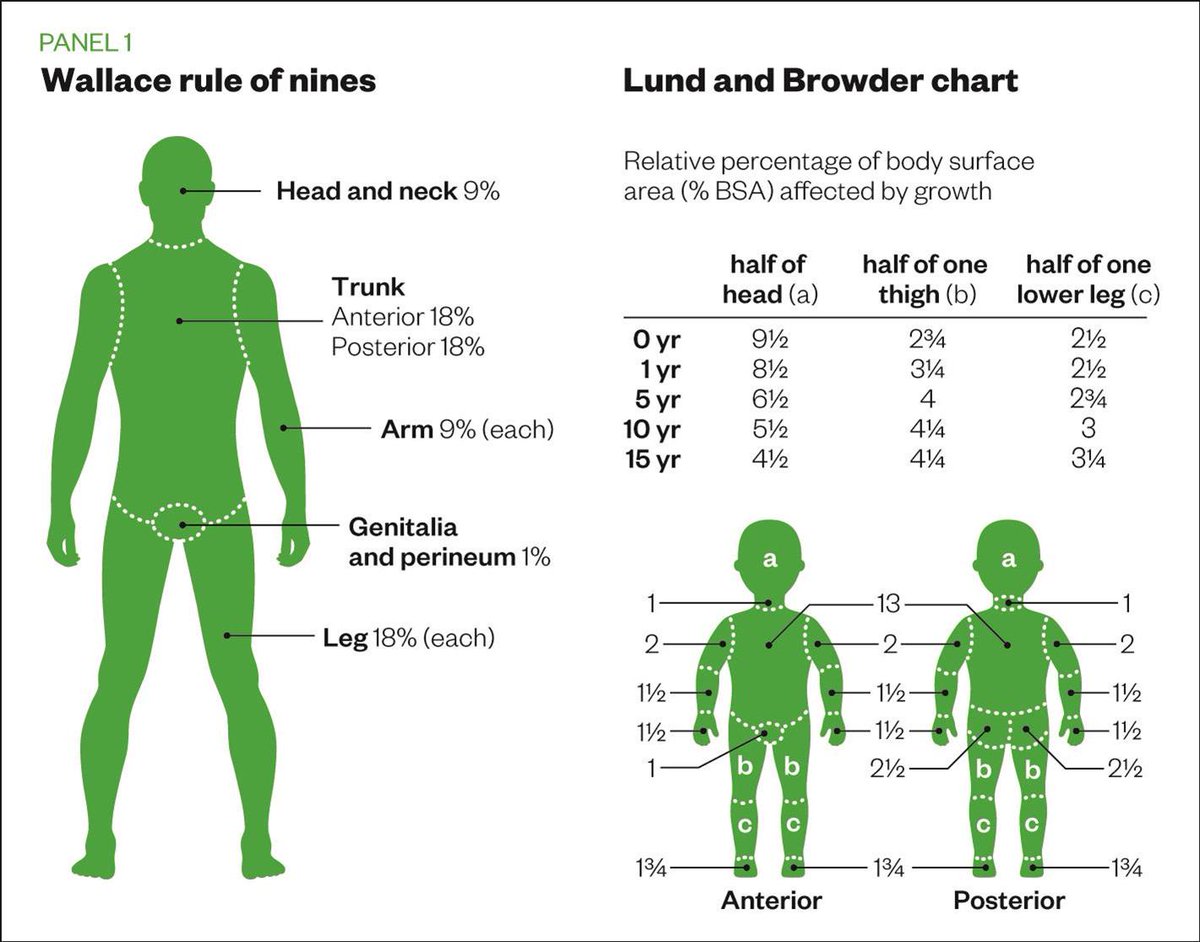 Your provider may use a method known as the “rule of nines” to get this estimate. The rule of nines divides the body into sections of 9% or 18% (2 times 9). The sections are divided as follows:
Your provider may use a method known as the “rule of nines” to get this estimate. The rule of nines divides the body into sections of 9% or 18% (2 times 9). The sections are divided as follows:
- Head and neck: 9% of TBSA
- Each arm: 9% TBSA
- Each leg: 18% TBSA
- Anterior trunk (front of the body) 18% TBSA
- Posterior trunk (back of the body) 18% TBSA
Rule of nines estimates are not used for children. Their bodies have different proportions than adults. If your child has a burn that covers a medium to large area, your provider may use a chart, called a Lund-Browder chart, to make an estimate. This gives more accurate estimates based on a child’s age and body size.
If you or your child has a burn that covers a small area, your provider may use an estimate based on the size of the palm, which is about 1% of TBSA.
What else happens during a burn evaluation?
If you have a serious burn injury, you may also need an emergency evaluation known as an ABCDE assessment. ABCDE assessments are used to check key body systems and functions. They often take place in ambulances, emergency rooms, and hospitals. They are used for different types of traumatic emergencies, including severe burns. “ABCDE” stands for the following checks:
ABCDE assessments are used to check key body systems and functions. They often take place in ambulances, emergency rooms, and hospitals. They are used for different types of traumatic emergencies, including severe burns. “ABCDE” stands for the following checks:
- Airway. A health care provider will check for any blockages in your airway.
- Breathing. A provider will check for signs of trouble breathing, including coughing, rasping, or wheezing. The provider may use a stethoscope to monitor your breath sounds.
- Circulation. A provider will use devices to check your heart and blood pressure. He or she may insert a thin tube called a catheter into your vein. A catheter is a thin tube that carries fluids into your body. Burns can often cause serious fluid loss.
- Disability. A provider will check for signs of brain damage. This includes checking to see how you respond to different verbal and physical stimulation.

- Exposure. A provider will remove any chemicals or burn-causing substances from the skin by flushing the injured area with water. He or she may bandage the area with a sterile dressing. The provider will also check your temperature, and warm you with a blanket and warm fluids if necessary.
Is there anything else I should know about a burn evaluation?
Burns and fires are the fourth most common cause of accidental death in children and adults in the U.S. Young children, older adults, and people with disabilities are at a higher risk of burn injury and death. The vast majority of burn accidents can be prevented with some simple safety precautions. These include:
- Set your water heater to 120°F.
- Test the water temperature before you or your child gets into the tub or shower.
- Turn handles of pots and pans toward the back of the stove, or use back burners.
- Use smoke alarms in your home and check batteries every six months.

- Check electrical cords every few months. Throw out any that are frayed or damaged.
- Put covers on electrical outlets that are within a child’s reach.
- If you smoke, never smoke in bed. Fires caused by cigarettes, pipes, and cigars are the leading cause of deaths in house fires.
- Be very careful when using space heaters. Keep them away from blankets, clothes, and other flammable materials. Never leave them unattended.
To learn more about burn treatment or prevention, talk to your health care provider or your child’s provider.
References
- Agrawal A, Raibagkar SC, Vora HJ. Friction Burns: Epidemiology and Prevention. Ann Burns Fire Disasters [Internet]. 2008 Mar 31 [cited 2019 May 19]; 21(1): 3-6. Available from: https://www.ncbi.nlm.nih.gov/pmc/articles/PMC3188131
- Children’s Hospital of Wisconsin [Internet]. Milwaukee: Children’s Hospital of Wisconsin; c2019. Facts about burn injury; [cited 2019 May 8]; [about 4 screens].
 Available from: https://www.chw.org/medical-care/burn-program/burns/facts-about-burn-injury
Available from: https://www.chw.org/medical-care/burn-program/burns/facts-about-burn-injury - Familydoctor.org [Internet]. Leawood (KS): American Academy of Family Physicians; c2019. Burns: Preventing Burns in Your Home; [updated 2017 Mar 23; cited 2019 May 8]; [about 4 screens]. Available from: https://familydoctor.org/burns-preventing-burns-in-your-home
- Merck Manual Consumer Version [Internet]. Kenilworth (NJ): Merck & Co., Inc.; c2019. Burns; [cited 2019 May 8]; [about 2 screens]. Available from: https://www.merckmanuals.com/home/injuries-and-poisoning/burns/burns?query=burn%20evaluation
- National Institute of General Medical Sciences [Internet]. Bethesda (MD): Burns; [updated 2018 Jan; cited 2019 May 8]; [about 2 screens]. Available from: https://www.nigms.nih.gov/education/pages/Factsheet_Burns.aspx
- Olgers TJ, Dijkstra RS, Drost-de-Klerck AM, Ter Maaten JC. The ABCDE primary assessment in the emergency department in medically ill patients: an observational pilot study.
 Neth J Med [Internet]. 2017 Apr [cited 2019 May 8]; 75(3):106–111. Available from: https://www.ncbi.nlm.nih.gov/pubmed/28469050
Neth J Med [Internet]. 2017 Apr [cited 2019 May 8]; 75(3):106–111. Available from: https://www.ncbi.nlm.nih.gov/pubmed/28469050 - Strauss S, Gillespie GL. Initial assessment and management of burn patients. Am Nurse Today [Internet]. 2018 Jun [cited 2019 May 8]; 13(6):16–19. Available from: https://www.americannursetoday.com/initial-assessment-mgmt-burn-patients
- TETAF: Texas EMS Trauma and Acute Care Foundation [Internet]. Austin (TX): Texas EMS Trauma and Acute Care Foundation; c2000–2019. Burn Clinical Practice Guideline; [cited 2019 May 8]; [about 4 screens]. Available from: http://tetaf.org/wp-content/uploads/2016/01/Burn-Practice-Guideline.pdf
- Thim T, Vinther Karup NH, Grove EL, Rohde CV, Lofgren B. Initial assessment and treatment with the Airway, Breathing, Circulation, Disability, Exposure (ABCDE) approach. Int J Gen Med [Internet]. 2012 Jan 31 [cited 2019 May 8]; 2012(5):117–121. Available from: https://www.ncbi.nlm.nih.gov/pmc/articles/PMC3273374
- University of Rochester Medical Center [Internet].
 Rochester (NY): University of Rochester Medical Center; c2019. Health Encyclopedia: Burns Overview; [cited 2019 May 8]; [about 2 screens]. Available from: https://www.urmc.rochester.edu/encyclopedia/content.aspx?ContentTypeID=90&ContentID=P01737
Rochester (NY): University of Rochester Medical Center; c2019. Health Encyclopedia: Burns Overview; [cited 2019 May 8]; [about 2 screens]. Available from: https://www.urmc.rochester.edu/encyclopedia/content.aspx?ContentTypeID=90&ContentID=P01737 - UW Health [Internet]. Madison (WI): University of Wisconsin Hospitals and Clinics Authority; c2019. Burn Center: Burn Center Frequently Asked Questions; [updated 2019 Feb 11; cited 2019 May 8]; [about 3 screens]. Available from: https://www.uwhealth.org/burn-center/burn-center-frequently-asked-questions/29616
- UW Health [Internet]. Madison (WI): University of Wisconsin Hospitals and Clinics Authority; c2019. Emergency Medicine: Assessing Burns and Planning Resuscitation: The Rule of Nines; [updated 2017 Jul 24; cited 2019 May 8]; [about 3 screens]. Available from: https://www.uwhealth.org/emergency-room/assessing-burns-and-planning-resuscitation-the-rule-of-nines/12698
- World Health Organization [Internet]. Geneva (SUI): World Health Organization; c2019.
 Management of Burns; 2003 [cited 2019 May 8]; [about 4 screens]. Available from: https://www.who.int/surgery/publications/Burns_management.pdf
Management of Burns; 2003 [cited 2019 May 8]; [about 4 screens]. Available from: https://www.who.int/surgery/publications/Burns_management.pdf
EMS burn patient triage and transport decision guide
David Wright, MS, PA-C, NREMT-P
Use this guide to determine when to activate air EMS and transport to a level 1 burn center
EMS clinicians are in a unique position to provide proactive education to patients as the only subset of clinicians that enter their homes. Read more and download a resource to share with your patients: Burn prevention – A printable guide
Test your knowledge. Take the quiz: Burn classification and treatment
By David Wright, MS, PA-C, NRP; Kate Randolph, BS
Every 60 seconds, somebody in the U.S. suffers a burn severe enough to require medical treatment [1]. There is a high probability that you will encounter someone who will require burn treatment at some point in your career.
[Download a guide to helicopter EMS (HEMS) treatment for burn patients at the end of this article]
It is imperative for EMS clinicians to understand how heat energy is transferred, how burns are classified and immediate treatment of those burns. (AP Photo/Damian Dovarganes)
These situations are often stressful for emergency medicine clinicians, not only because of the injury caused by the burn, but because burns are more likely to happen to children and older adults, two age groups that already elicit larger amounts of stress from emergency clinicians [1].
Many of these burn injuries could often be avoided with basic household safety and maintenance [2]. As EMS clinicians, we are in a unique position to be able to provide proactive education to patients as we enter their homes. It is imperative for EMS clinicians to understand how heat energy is transferred, how burns are classified and immediate treatment of those burns [3].
Burn classifications
There are multiple characteristics used in the classification of burns. The three most common characteristics used are cause, depth and extent of the burn. Classification by cause would be classified as either thermal or inhalation [4].
Thermal burns involve the skin and may be seen as any of the following:
- Scalds. Caused by hot liquid or steam
- Contact. Caused by hot solids or items such as a hot cooking item
- Flame. Caused by flames
- Chemical. Caused by exposure to reactive chemicals such as acids
- Electrical. Caused by electrical current passing from electric outlet
Inhalation burns are the most serious immediate life threat that can present both with or without an accompanying thermal burn. Inhalation burns occur as the result of breathing superheated gases, hot liquid or steam, etc [4]. EMS clinicians should be on heightened alert for these types of burns as they can cause chemical or thermal damage to the airway and lungs, and in some cases lead to death.
EMS clinicians should be on heightened alert for these types of burns as they can cause chemical or thermal damage to the airway and lungs, and in some cases lead to death.
When initially assessing a burn victim, there should be an immediate assessment of the face and airways, examining for signs of inhalation damage, as this is the most common cause of death among those suffering fire-related burns [4,5]. Patients who have airway compromise should have their airway controlled as soon as possible by someone skilled in endotracheal intubation, and taken to a medical center that can visualize the airways with a bronchoscope.
The most important factor in determining how a burn is treated is the depth of the burn. The skin, the largest organ of the body, is divided into the outer epidermis and the inner dermis. The epidermis is composed of a layer of cells that play a major role in protecting our body from harmful substances. The dermis contains blood vessels, nerves, hair follicles, sweat glands, and sebaceous glands. The dermis layer of the skin assists in providing nourishment to itself and the epidermis [5].
The dermis layer of the skin assists in providing nourishment to itself and the epidermis [5].
When examining a burn’s depth, appearance, blanching to pressure, pain and sensation need to be taken into consideration.6 The following points describe the types of burns based on depth:
- Superficial (first degree) burns only involve the epidermis of the skin and appear red or pink with no blistering. Superficial burns are normally dry with moderate pain, typically healing within the next week [6].
- Partial thickness (second degree) burns involve dermis of the skin. When the partial thickness burn only involves the top layer of the dermis, then it will appear red, blistering and wet. This burn will blanch with pressure and is associated with severe pain, typically healing with minimal to no scarring within 3 weeks [6]. Partial thickness burns involving the deeper dermis have a deep cherry-red color, are dry, and will not blanch with pressure [5].
 These burns are associated with minimal pain due to loss of sensation, and healing typically occurs within 3 to 8 weeks with considerable scarring [6].
These burns are associated with minimal pain due to loss of sensation, and healing typically occurs within 3 to 8 weeks with considerable scarring [6]. - Full thickness (third degree) burns involve the entire thickness of the skin and subcutaneous structures. These burns appear white, black or brown with a leathery, dry texture [6]. These burns have minimal to no pain due to loss of sensation. Full thickness burns will take over 8 weeks to heal, usually require skin grafting, and, unless treated surgically, will result in scarring, sepsis, and/or death [5].
Classification of Burn Depth
| Superficial Burns | Partial Thickness Burns | Full Thickness Burns |
|---|---|---|
| Superficial Partial Thickness
Deep Partial Thickness
|
|
Classification by the extent of the burn is completed using the total body surface area burned (TBSA).
Estimation of total body surface area (Rule of 9s)
To estimate the total body surface area affected by burn injury, the EMS clinician can utilize the rule of 9s. This commonly used tool can be used on both adult and pediatric patients, but it is important to note there are some differences when using this tool on smaller patients [7]. This calculation of burn affected area is critical in determining fluid resuscitation as massive amounts of fluid is lost in burn victims due to the removal of the protective skin barrier. When calculating burn TBSA, it is important to note that only partial thickness and full thickness burns are used to assess the severity of fluid loss [7]. The rule of 9s estimation of TBSA is based on assigning percentages to each body part, as seen below [8].
- Head/neck: 9% TBSA
- Each arm: 9%TBSA
- Anterior thorax: 18% TBSA
- Posterior thorax: 18% TBSA
- Each leg: 18% TBSA
- Perineum: 1% TBSA
Once the TBSA is determined, calculation for fluid resuscitation can be performed via the Parkland Formula. This formula requires the knowledge (or estimation) of the patient’s weight in kilograms (kg). The total fluid volume (TFV) to be infused is calculated using the formula TFV = 4(ml) x (TBSA) x (weight in kg). After the total volume of IV fluid is calculated, the first half is given in the initial 8 hours, with the other half given over the next 16 hours [7]. Fluid resuscitation is critical in the initial management of moderately to severely burned patients, especially in those with >20% TBSA, as mortality in these patients is known to be significantly higher [7]. While it is always important to follow your local protocols, initial fluid management is often performed with normal saline, or normal saline with dextrose, until electrolytes can be evaluated. If potassium is normal, it is then commonly switched to lactated ringer’s solution.
This formula requires the knowledge (or estimation) of the patient’s weight in kilograms (kg). The total fluid volume (TFV) to be infused is calculated using the formula TFV = 4(ml) x (TBSA) x (weight in kg). After the total volume of IV fluid is calculated, the first half is given in the initial 8 hours, with the other half given over the next 16 hours [7]. Fluid resuscitation is critical in the initial management of moderately to severely burned patients, especially in those with >20% TBSA, as mortality in these patients is known to be significantly higher [7]. While it is always important to follow your local protocols, initial fluid management is often performed with normal saline, or normal saline with dextrose, until electrolytes can be evaluated. If potassium is normal, it is then commonly switched to lactated ringer’s solution.
Parkland Formula
Initial burn treatment
For EMS clinicians, the most important treatment for those injured by burns is to remove the offending agent – i. e., stop the burning process. After the patient is removed from the environment, the triage process should begin.
e., stop the burning process. After the patient is removed from the environment, the triage process should begin.
Initially, a rapid assessment of the burn injury should be performed and include the following:
- Is the airway affected?
- Is the patient breathing adequately?
- If electrical – are they in a deadly cardiac dysrhythmia?
- How severe are the burns?
- What percentage of the body is burned?
- Is this a minor, moderate or severe burn?
- Does this patient need a dedicated burn center?
Primary management of burns should include respiratory and cardiovascular support, pain control, fluid resuscitation and management of wounds associated with the burns. Patients with severe burns are at increased risk for end-organ dysfunction primarily from under resuscitation, superimposed infection or underlying medical conditions. Under resuscitation is often the result of lacking fluid resuscitation, resulting in acute kidney injuries [9]. Infections, leading to sepsis, are often due to the contamination of the burns. It is critical that burn wounds are kept as clean as possible and covered with a clean dressing.
Infections, leading to sepsis, are often due to the contamination of the burns. It is critical that burn wounds are kept as clean as possible and covered with a clean dressing.
Extreme pain is often experienced by patients who have mild and moderate thickness burns. Pre-hospital pain management should be a priority utilizing local protocols appropriately.
After completion of the initial evaluation, is it important the patient does not become hypothermic. Emphasis is often provided to clinicians to complete their assessments by disrobing the patient and exposing the skin, yet it is equally important to ensure that the patient is not placed at unnecessary risk for hypothermia, either during transport or on scene management. Those patients at greatest risk for hypothermia receive prehospital rapid sequence intubation (RSI), or have a documented GCS of less than 8. Patients who experience either of these two incidences are twice as likely to be hypothermic on arrival to the hospital than their non-intubated or more alert counterparts [10].
Wound treatment for superficial and partial-thickness burns primarily includes keeping the wounds clean, preventing additional prehospital injury by removing them from the offending environment and maintaining a warm moist healing environment.9
Deeper full-thickness burns are often definitively managed with surgical intervention. For wounds that are dry, a clean dry covering will be effective. If an area of proximal skin is burnt and a distal area is unaffected, it is important to ensure the distal portion of the burned limb continues to be neurovascularly intact throughout treatment and transport [9].
Determining hospital destination
Burn treatment can be increasingly complex, thus patients should be triaged and dispositioned to the appropriate hospital. Level 1 burn centers are hospitals that have complex burn management teams comprised of a wide range of caregivers, including surgeons, anesthesiologist, nurses, social workers, respiratory therapists, therapy, nutrition specialist and psychosocial experts [11].
This multi-dimensional approach to burn management, often results in improved outcomes and better recoveries without the morbidity and disability that can occur in non-burn centers [12].
It is highly recommended that patients presenting with complex, moderate-severe or severe burns are transported to complex regional burn centers [12]. Those patients include those with the following criteria:
- Burns involving face, hands, feet, genitalia or crossing major joints
- Full thickness with no pinprick sensation in the burned area
- Burns with a total body surface area of greater than 10%
- Electrical or chemical burns
- Patients with pre-existing medical conditions that can complicate recovery
Each EMS clinician should be aware of the regional resources available to their patients and system. After accurate triage and assessment, EMS clinicians should determine which type of burn center is the most appropriate for the patient. If a Level 1 burn center would best suit the patient, it is important to evaluate how to get the patient there.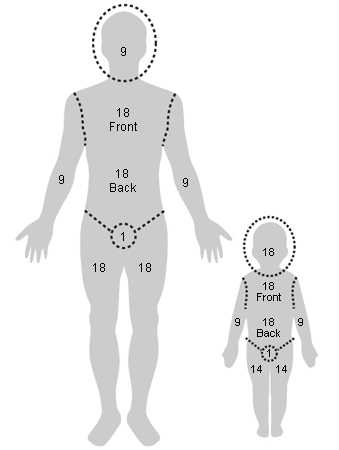
In some urban/suburban communities, a short simple drive will get you there, but in some rural/super-rural communities, a burn center may be many miles away. In those instances, it is important to have prior knowledge of burn centers, local resource capabilities, and what modes of transportation is available to patients to get them to where they need to go.
EMS transportation options
EMS often has three primary modes of transportation available to them:
- Ground ambulance
- Helicopter (rotor wing)
- Plane (fixed wing)
Pros and Cons of each mode of emergency transportation
| Ground Ambulance | Helicopter | Plane (fixed wing) | |
|---|---|---|---|
| Pros |
|
|
|
| Cons |
|
|
|
When evaluating the need for a helicopter for transporting a burn patient, the paramedic should ask themselves the following questions [13]:
[Print a copy of this guide]
- Does the patient require minimal transport time outside of the hospital or critical care setting?
- Are there time critical evaluations or treatments for the patient which are required but unavailable at the closest facility?
- Are ground units able to access the patient for timely transport?
- Are the predicted and current weather conditions along the expected path and nearby areas amenable to rotor-wing flight?
- Do the patient and all accompanying equipment fall within the size and weight limitations of the aircraft?
- Are helipads, airports or landing zones available near the referring and receiving hospitals?
- Can ground-based personnel provide the patient’s care requirements, or does the patient require a higher level of care only available on a HEMS unit?
- Can local ground transport services adequately provide a local response if a unit is taken out of service for a prolonged transport?
- Is regional ground-based critical care transport a viable alternative to HEMS transportation?
When evaluating the burn, HEMS activation should be considered for the following criteria:
- Greater than 20% total body surface area (TBSA) burns
- Burns to the face, head hands, feet or genitals
- Inhalation burn or injury
- Electrical or chemical burns
- Burns with associated injuries (fractures, crush)
Burn treatment considerations
Treating burn patients can be anything from a routine small burn to a very complex burn requiring specialized medical care and support.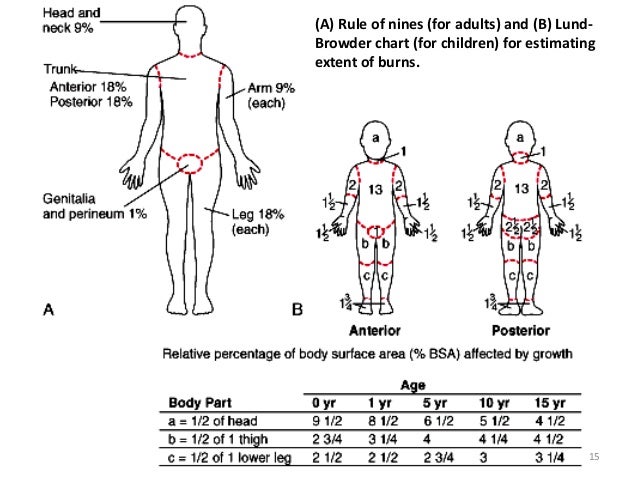 No matter what the severity of the burn, it is important to always consider the following:
No matter what the severity of the burn, it is important to always consider the following:
- Remove from burning area
- Keep clean and dry
- Control hypothermia
- Ensure pain control
- Pick the right destination
- Make the right transportation decision
By keeping these things in mind, you can make sure you are treating your patients appropriately and efficiently, providing the best possible care at the right time to your community.
Read next: Superficial burn care
Test your knowledge. Take the quiz: Burn classification and treatment
References
- National Fire Protection Association (2020) Burn Awareness. Accessed from: https://www.nfpa.org/burnawareness
- Stanford Children’s Hospital (2020). Preventing Burn Injuries. Accessed from: https://www.stanfordchildrens.org/en/topic/default?id=preventing-burn-injuries-90-P01750
- Navarro, K.
 (2010). Prehospital Management of Burns. Accessed from: https://www.dshs.texas.gov/emstraumasystems/JA10CEArticle.pdf
(2010). Prehospital Management of Burns. Accessed from: https://www.dshs.texas.gov/emstraumasystems/JA10CEArticle.pdf - Johnson, N. J. (2017, March). World Report on Child Injury Prevention. https://www.who.int/violence_injury_prevention/child/injury/world_report/Burns.pdf?ua=1
- Hussain, A. (2018). Surgical treatment of acute burns. Wounds UK, 14(2), 30–37.
- Warby, R. (2020, July 18). Burn Classification – StatPearls – NCBI Bookshelf. NCBI. https://www.ncbi.nlm.nih.gov/books/NBK539773/
- Moore, R. A. (2020, July 10). Rule of Nines – StatPearls – NCBI Bookshelf. NCBI. https://www.ncbi.nlm.nih.gov/books/NBK513287/
- University of Wisconsin Hospitals and Clinics Authority. (2017). Assessing Burns and Planning Resuscitation: The Rule of Nines. UW Health. https://www.uwhealth.org/emergency-room/assessing-burns-and-planning-resuscitation-the-rule-of-nines/12698
- UpToDate (2020). Overview of the Management of the Severely Burned Patient.
 Accessed from: https://www.uptodate.com/contents/overview-of-the-management-of-the-severely-burned-patient?search=burn%20treatment&source=search_result&selectedTitle=2~150&usage_type=default&display_rank=2
Accessed from: https://www.uptodate.com/contents/overview-of-the-management-of-the-severely-burned-patient?search=burn%20treatment&source=search_result&selectedTitle=2~150&usage_type=default&display_rank=2 - Page, D. & Trembley, A. (2014). Are We Keeping Out Burn Patients Warm Enough?. JEMS Vol 9 (39). Accessed from: https://www.jems.com/2014/09/15/are-we-keeping-our-burn-patients-warm-en/
- Al-Mousawi, A. M., Mecott-Rivera, G. A., Jeschke, M. G., & Herndon, D. N. (2009). Burn teams and burn centers: the importance of a comprehensive team approach to burn care. Clinics in plastic surgery, 36(4), 547–554. https://doi.org/10.1016/j.cps.2009.05.015
- Wilson Shupp, J. (2018) When to Seek Treatment at a Burn Center. American Burn Association. Accessed from: https://ameriburn.org/when-to-seek-treatment-at-a-burn-center/
- Godfrey A, Loyd JW. EMS, Helicopter EMS (HEMS) Activation. [Updated 2020 Aug 24]. In: StatPearls [Internet].
 Treasure Island (FL): StatPearls Publishing; 2020 Jan-. Available from: https://www.ncbi.nlm.nih.gov/books/NBK513336/
Treasure Island (FL): StatPearls Publishing; 2020 Jan-. Available from: https://www.ncbi.nlm.nih.gov/books/NBK513336/ - Mayo Clinic (2020) Burn Safety: Protect your child from burns. Accessed from: www.mayoclinic.org/healthy-lifestyle/infant-and-toddler-health/in-depth/child-safety/art-20044027
- American Academy of Family Physicians. Burns: Preventing burns in your home. Accessed from: https://familydoctor.org/burns-preventing-burns-in-your-home/
- Center for Disease Control and Prevention (2020). Burn Prevention. Accessed from: https://www.cdc.gov/safechild/burns/index.html
About the authors
Kate Randolph, BS, recently graduated in May 2020 from Central Methodist University where she graduated with honors with a Bachelor of Science Degree in Biology. She is highly motivated to continue working to complete the pre-requisites before pursuing admission as a physician assistant student in 2021. She is currently employed at Mercy Hospital in Creve Couer as a patient care associate in the Medical Progressive Care Unit where she is able to provide excellent patient care and follow her passion for medicine, while obtaining valuable experience in the healthcare field. She hopes one day to work as a pediatric physician assistant taking care of infants and children in their time of need.
She hopes one day to work as a pediatric physician assistant taking care of infants and children in their time of need.
This article was originally posted Feb. 4, 2021. It has been updated.
Download a guide to HEMS treatment for burn patients
About the author
David Wright, MS, PA-C, NREMT-P, is a physician assistant at Washington University in St. Louis working in the Division of Pediatric Emergency Medicine. He is a former paramedic who has worked in a busy 911 response service, hospital emergency rooms, and as a flight paramedic. He also currently holds certifications as a Nationally Registered Paramedic, TEMS, EMS Instructor, Clinical Simulation Instructor, Firefighter I & II and Hazmat Operations. His passions include EMS education, clinical simulation and furthering the EMS profession.
- Tags
- Airway Management
- Burns
- Downloads
- ET3 – Emergency Triage, Treat and Transport Model
- Fire
- Intubation
- Medical Treatment
- Pain Management
- Patient Safety
- Resuscitation
- Sepsis
- Transport
- Treatment
- Wound Care
Applications: Latest news of Russia and the world – Kommersant Zdravookhranenie (126391)
The skin is the largest organ of the human body in terms of area.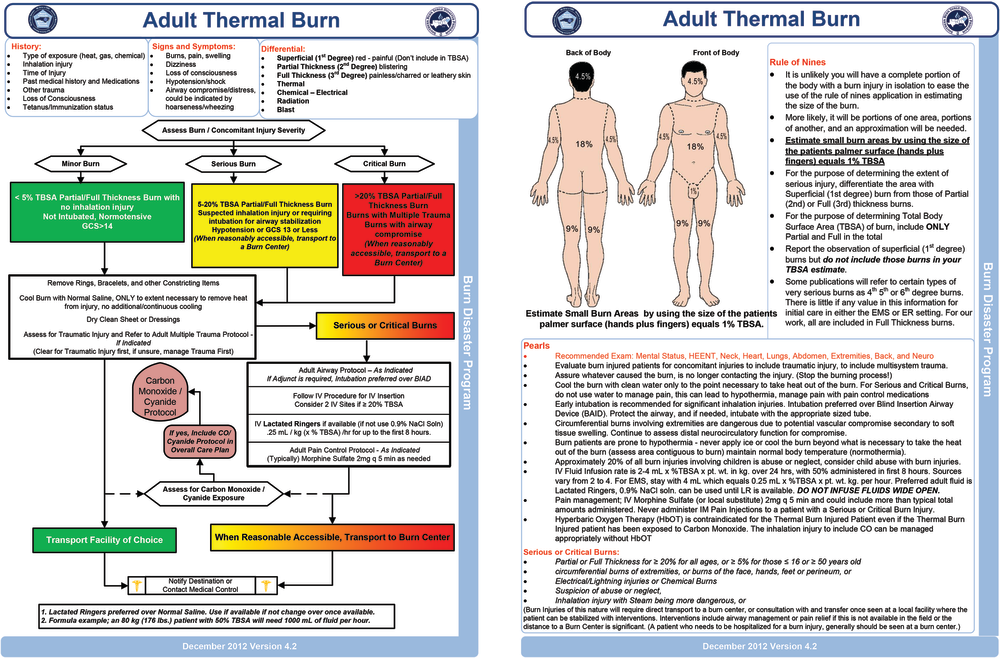 It is involved in the process of respiration, thermoregulation. Any damage to it under the influence of high or low temperatures and certain chemicals is called a burn. Every year, half a million people enter Russian clinics with burns, 10% of them are children under 18 years of age. Burn injuries of any degree of complexity are treated in the Moscow Children’s Hospital. G. N. Speransky (GBUZ DGKB No. 9DZM).
It is involved in the process of respiration, thermoregulation. Any damage to it under the influence of high or low temperatures and certain chemicals is called a burn. Every year, half a million people enter Russian clinics with burns, 10% of them are children under 18 years of age. Burn injuries of any degree of complexity are treated in the Moscow Children’s Hospital. G. N. Speransky (GBUZ DGKB No. 9DZM).
Moscow Children’s City Hospital No. 9 named after G.N. Speransky. Pediatric Surgery Clinic
Photo: Ivan Vodopyanov, Kommersant
Moscow City Children’s Hospital No. 9 named after G.N. Speransky. Pediatric surgery clinic
Photo: Ivan Vodopyanov, Kommersant
It takes seconds
Bandaging in the infants’ department of the Children’s Burn Center of the Children’s City Clinical Hospital No. 9 named after Speransky. Four nurses are trying to bandage one-year-old Masha*, she screams loudly from pain and fear.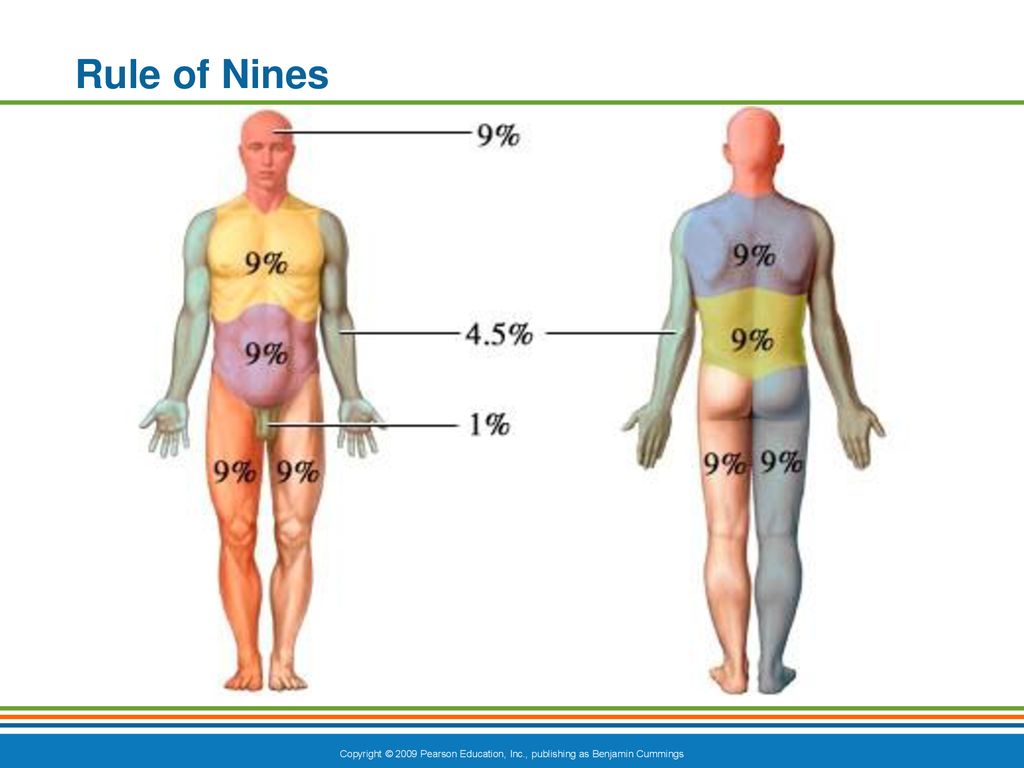 The girl has a burn of the chest and right arm. Masha’s mother is waiting in the hallway for the end of the dressing. “She just started walking and is very independent. She went to the table, rose on her toes, took the mug with her right hand and pulled it towards herself. I ran to her scream and saw her sitting on the floor in a puddle of coffee. Well, we also made coffee half an hour ago, it was not quite hot, but that was enough, ”my mother says in a hushed voice. The head of the burn department No. 2, Lyudmila Budkevich, does not interrupt and is not surprised at anything.
The girl has a burn of the chest and right arm. Masha’s mother is waiting in the hallway for the end of the dressing. “She just started walking and is very independent. She went to the table, rose on her toes, took the mug with her right hand and pulled it towards herself. I ran to her scream and saw her sitting on the floor in a puddle of coffee. Well, we also made coffee half an hour ago, it was not quite hot, but that was enough, ”my mother says in a hushed voice. The head of the burn department No. 2, Lyudmila Budkevich, does not interrupt and is not surprised at anything.
Patients with household burns of varying degrees of damage are the most here. Masha got off lightly. She has a “hot liquid burn over a 4% body area”. That is, the burn is equal to the total area of four Masha’s hands, if they are conditionally projected onto her body. In doctors, this procedure for determining damage is called the “rule of the palm”.
There is also the “rule of nines”. The surfaces of some organs, such as the head, occupy 9% of the skin of the body. The skin of the legs occupies 18%, the feet – 1%, buttocks – 5%. These figures are important for determining the amount of fluid therapy required for a blood transfusion, because any burn is associated with blood loss.
The skin of the legs occupies 18%, the feet – 1%, buttocks – 5%. These figures are important for determining the amount of fluid therapy required for a blood transfusion, because any burn is associated with blood loss.
About 3,000 children from all over the country, from newborns to 18 years old, visit this burn center every year.
“Most of the patients have domestic trauma. It is explainable. It only takes a second for a child to get burned. A mother or grandmother goes to the stove, leads the child in one hand, and stirs the porridge with the other, the child moves, the hand trembles – and the contents of the pan fall on the child. Sometimes it happens that seven nannies have a child without an eye. They bring children who got burned when all the relatives were at home,” says Lyudmila Budkevich. “Rarely, one of the parents of the injured children admits their responsibility for what happened. Most often, people blame doctors for failing to save a baby with a burn injury.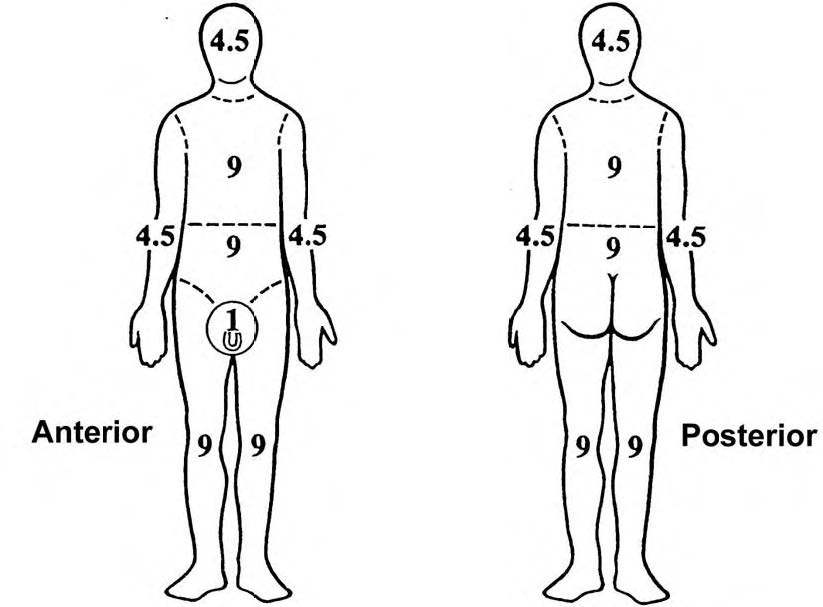 It so happened that I leave the operating room and explain to parents that their child has a much less chance of surviving than dying, and immediately become enemy number one. Explaining to parents that if they had been more attentive, nothing like this would have happened is sometimes simply impossible.
It so happened that I leave the operating room and explain to parents that their child has a much less chance of surviving than dying, and immediately become enemy number one. Explaining to parents that if they had been more attentive, nothing like this would have happened is sometimes simply impossible.
Seasonal factor
In the department, designed for babies from the first days of life up to 33 years, 20 beds – this is the only one in Russia. We go along a long hospital corridor, one of its walls consists of a series of large windows. Behind them are boxes, each with two beds, a sink, a refrigerator, a table and two chairs. On the day of our visit, the boxes are half empty: there are not many patients at this time of the year. “Burn injury has a certain seasonality: the largest number of patients occurs in July-August and January-February. In the summer, when school ends and children have more free time with trips to the country, kindling fires, riding on the roofs of electric trains, there are a lot of places for getting burn injuries, the burn center is full, ”says Evgeny Ryzhov, Deputy Chief Physician for Surgery.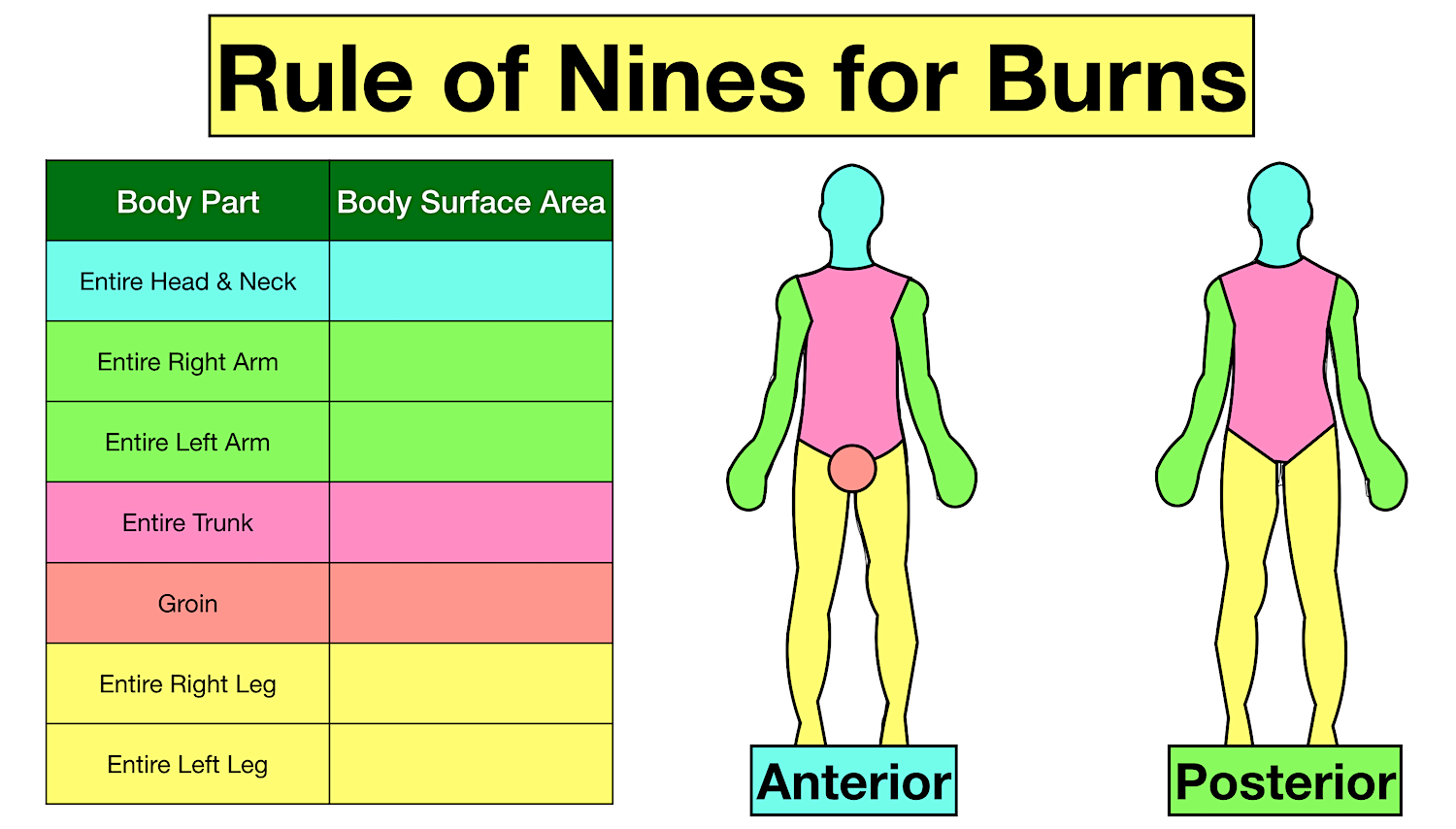
The section for children aged 3 to 18 is more crowded. And here it is clean and tidy, but cramped. Almost all patients in this department have burns of the second and third degree, that is, very deep. Many need plastic surgery.
Three-degree classification of burns in our country is not so long ago. In the USSR, a four-degree classification of burns was used, in which the third degree was divided into two degrees: “a” and “b”. In some regions of Russia, the allied classification is still used, but the Moscow Speransky Burn Center switched to a three-degree classification in order to comply with international standards.
The children’s burn center performs two or three surgeries every day, more than four, according to doctors, never happens. For many years, we have become accustomed to dealing with burn wounds of any complexity.
On the day of our visit, a boy from Vladikavkaz was operated on, who received an electric shock and burns from a high-voltage arc while riding on the roof of an electric train car. Through the glass doors of the operating room, four doctors could be seen bending over the operating table: the burn affected almost 80% of the child’s body. Doctors are waiting for hard work, and their patient – a long period of rehabilitation. Red singed legs are visible, over which the doctors leaned.
Through the glass doors of the operating room, four doctors could be seen bending over the operating table: the burn affected almost 80% of the child’s body. Doctors are waiting for hard work, and their patient – a long period of rehabilitation. Red singed legs are visible, over which the doctors leaned.
12-year-old Kolya, for example, has a disfigured stomach and right leg: he knocked a bucket of hot water over himself, miraculously not injuring his scrotum. The healed skin is pulled together, one of its pieces on the right leg is linked to the left. When the child takes off his shorts, lies on his back and raises his legs, it becomes clear that both of the boy’s legs are connected by a 4–5 cm wide flap of skin a few centimeters from the crotch. Kolya is waiting for the operation.
Fyodor, who was brought from Barnaul, has a burn all over his stomach, which was received from an electric shock. Fedor was rescued, but now his body is covered with scars. The boy will have a series of operations.
“Last year they brought in two guys who got burned while fishing: a fishing rod closed a high-voltage line. One was not saved – he had a 90% burn of the body, and the patient with a burn of 70% of the body survived, ”says Sergey Pilyutin, head of the intensive care unit of the burn center.
Partial list
Treatment of patients with burn injuries is always a joint work of resuscitators, anesthesiologists, surgeons and even nutritionists, gastroenterologists, rehabilitation specialists, etc.
Photo: Ivan Vodopyanov, Kommersant
Treatment of patients with burn injuries is always a joint work of intensive care physicians, anesthesiologists, surgeons and even nutritionists, gastroenterologists, rehabilitation specialists, etc.
Photo: Ivan Vodopyanov, Com Mersant
Burn Injuries have been dealt with at Hospital No. 9 for more than 50 years. The first burn beds appeared in the hospital in 1968. Ten years later, in 1978, a joint order was issued by the Ministry of Health of the USSR and the All-Union Children’s Fund. V. I. Lenin on the creation of a children’s burn center.
Ten years later, in 1978, a joint order was issued by the Ministry of Health of the USSR and the All-Union Children’s Fund. V. I. Lenin on the creation of a children’s burn center.
The center treats children with wounds of any etiology, since the healing process for wounds, from local therapy to surgical treatment for soft tissue repair, is the same. And it doesn’t matter if the child got burned from hot coffee or from the flash of the current collector in the train. Children with a rare disease epidermolysis bullosa, an incurable skin disease, are also brought here, to Speransky. And this, of course, is not the whole list.
Last year, a boy was brought to the Moscow center from Tataria, who fell into the moving structures of an oil well. He received extensive lacerated wounds covering 30% of the body area, almost completely lost the skin and muscles on both legs. He spent 16 hours without medical care, lay on the ground, and only on the fourth day he entered the Speransky Burn Center, he was threatened with amputation of both legs due to extensive tissue necrosis. But here he underwent an early necroctomy, removed dead tissues, and underwent several plastic surgeries. Now the child is at home, he can walk.
But here he underwent an early necroctomy, removed dead tissues, and underwent several plastic surgeries. Now the child is at home, he can walk.
This is not the only case. Last year, a 16-year-old teenager was operated on, who lost the zygomatic part of the skull due to an explosion. A boy was also on the operating table, whose foot was torn off by a garage door.
Technology of life
The first stage of medical care in the burn center is tissue restoration, the second is plastic surgery, work with scars. The center has a department of reconstructive plastic surgery, where the consequences of severe burn injuries are treated. Six beds for specialized medical care for patients with consequences of burn injuries are also available in the intensive care unit. After discharge, the children are observed in the consultative and diagnostic center of the hospital.
Doctors use high-tech instruments, such as a hydrosurgical scalpel, which remove dead tissue, clean areas of secondary necrosis: a jet of water works like a knife.
Another technology is a negative pressure system for preparing the wound surface for skin plastic surgery.
Fluidos Redactron anti-burn beds are also used in the departments of the center. Instead of a mattress, the patient is placed on a moving light fabric, under which there is no classic mattress. It seems to an ignorant person that water is splashing under the fabric or the wind is walking, but this effect is achieved due to quartz microspheres from special sand, which is in suspension due to the air supplied under the fabric from the diffuser located at the bottom of the “bed”. Each bed contains about 700 kg of sand. It has a built-in dehydration module that absorbs the moisture that has appeared. A child, lying in such a bed, is in weightlessness, not feeling the weight of the body, the fabric does not press on him, and he does not hurt. In addition, due to artificial temperature control in the bed, it is possible to warm the patient. “The latter is very important, because during the operation the patient’s body temperature drops,” says Lyudmila Budkevich.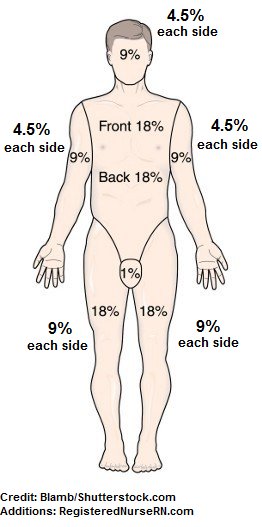 One of these beds is in the department for children from 3 to 18 years old. It was there that they brought a teenager bandaged from head to toe after an operation, who received a burn from a current collector in Vladikavkaz.
One of these beds is in the department for children from 3 to 18 years old. It was there that they brought a teenager bandaged from head to toe after an operation, who received a burn from a current collector in Vladikavkaz.
Collaboration
Five or ten specialists can work with one child, depending on the severity of the burn injury
Photo: Ivan Vodopyanov, Kommersant
Five or ten specialists can work with one child, depending on the severity of the burn injury
Photo: Ivan Vodopyanov, Kommersant
Most children who have undergone surgery at a burn center are waiting for doctors to restore their face to the way it was before the injury. Often, doctors have to explain to the parents of children for a very long time that there are no technologies in the world that allow the skin to return to its pre-traumatic appearance, and that even tissue restoration after extensive skin damage is a miracle. “Parents do not always respond adequately. The results of the operation, which surgeons consider excellent, cause them only complaints and negative emotions. This is a very unpleasant moment in our work,” Lyudmila Budkevich admits.
“Parents do not always respond adequately. The results of the operation, which surgeons consider excellent, cause them only complaints and negative emotions. This is a very unpleasant moment in our work,” Lyudmila Budkevich admits.
Treatment of patients with burn injuries is always a joint effort of intensive care physicians, anesthesiologists, surgeons and even nutritionists, gastroenterologists and rehabilitation specialists. Five or ten specialists can work with one child, depending on the severity of the burn injury. This is confirmed by the head of department No. 1 Oleg Starostin. Each department employs four doctors, including the head of the department. There are fewer nurses as a result of the restructuring of the healthcare system. Previously, the center had 23 nurses, and now there are 14, along with dressing and treatment nurses. They are assisted by part-time workers, researchers (the burn center is the base for scientific research). The leadership of the burn center does not hide the fact that due to cutbacks, the workload on active nurses has increased.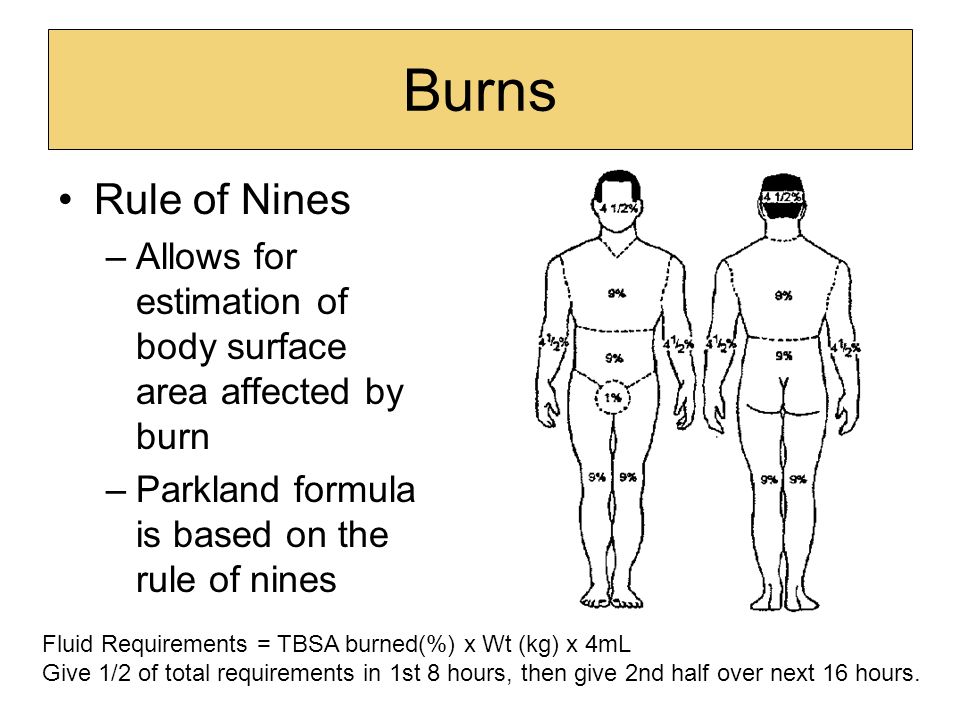
Doctors are in a different situation. “Working with us is prestigious and promising – young doctors from other clinics and students come to us, in general we have good compatibility and continuity in the profession, the staff is fully staffed,” says Evgeny Ryzhov. “For example, in winter there was no doctor in the emergency room , we offered a resident to work with the prospect of becoming a surgeon in the future – the rate was closed quickly. Doctors from regional hospitals seek to work in our center or at least for an internship.”
Anna Geroeva, Moscow
Patient names have been changed for ethical reasons.
First aid for burns | Smirnov S.V., Nuzhdin O.I., Volenko A.V., Goryunov S.V.
City Clinical Hospital No. 15, Moscow
O First aid for thermal injury requires a therapeutic effect on several pathological components at once. They are: pain syndrome, drying or swelling of the wound and infection of the burn surface. In the present arsenal of therapeutic agents, not many have an effect on all components of the burn process. For this reason, medical agents of various directions of action are combined, such as anesthetics, antiseptics, films for delimiting wounds from the external environment. Their use gives a good effect, but it definitely requires a lot of time for the doctor, both for the wound treatment process itself and for frequent visits to the patient. An example is the use of furacilin for antiseptic treatment of burn wounds at different stages, followed by the use of drugs specific to this stage of the wound process. General anesthesia is performed only for extensive and severe lesions. With a weak pain syndrome, as far as is known, general anesthesia is considered inappropriate, and local anesthesia is performed only in rare cases due to the high cost of funds and the complexity of the procedure.
For this reason, medical agents of various directions of action are combined, such as anesthetics, antiseptics, films for delimiting wounds from the external environment. Their use gives a good effect, but it definitely requires a lot of time for the doctor, both for the wound treatment process itself and for frequent visits to the patient. An example is the use of furacilin for antiseptic treatment of burn wounds at different stages, followed by the use of drugs specific to this stage of the wound process. General anesthesia is performed only for extensive and severe lesions. With a weak pain syndrome, as far as is known, general anesthesia is considered inappropriate, and local anesthesia is performed only in rare cases due to the high cost of funds and the complexity of the procedure.
Of the combined remedies for first aid for burns, there are such remedies as Fastin – ointment, Algipor – gel, Dioxicol. They are easy to use, because. contain antiseptics and anesthetics, like Dioxicol.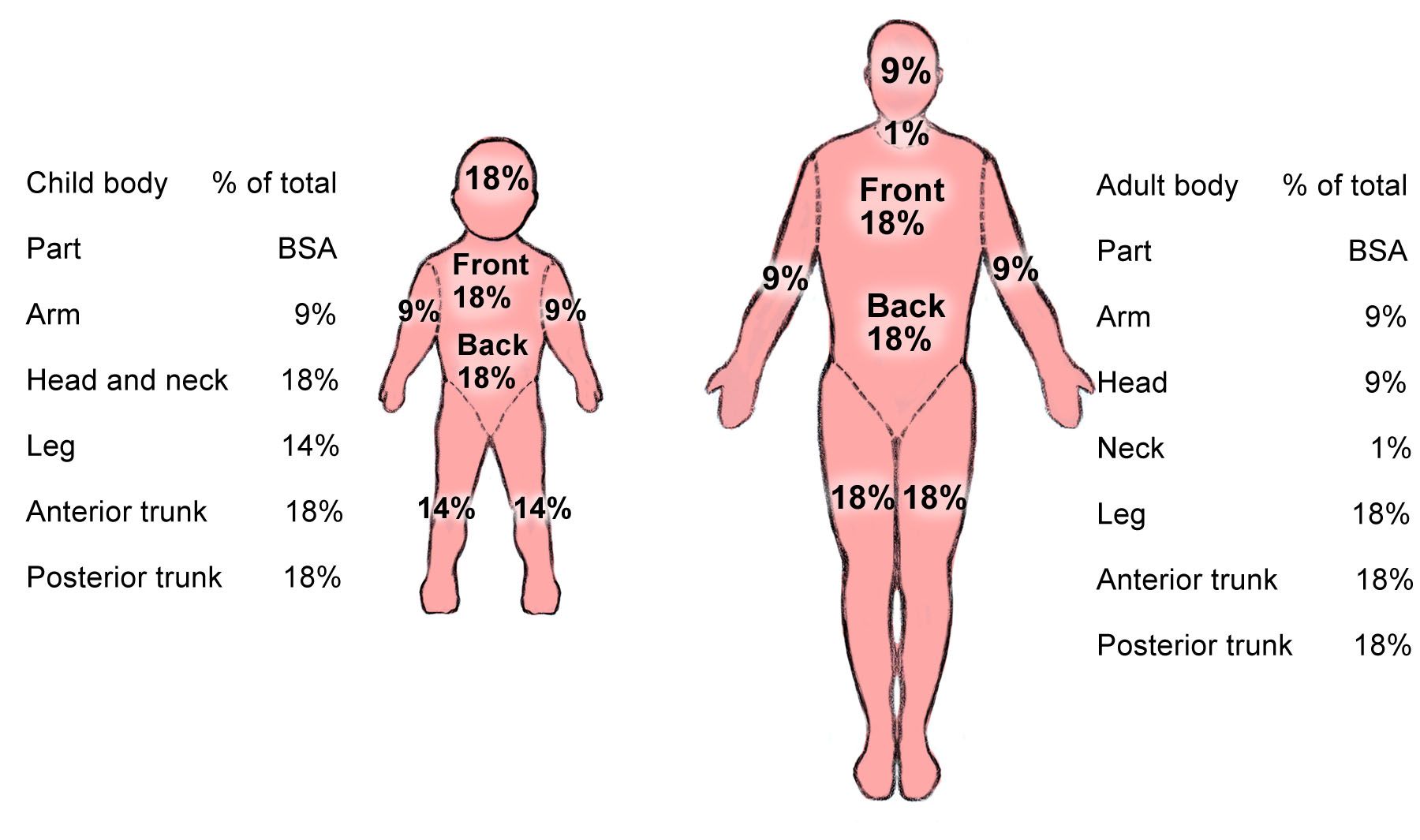 However, Dioxicol does not rehydrate tissues. Fastin, in addition to antiseptic action, prevents tissues from dehydration, since it contains about 90% water. But it does not contain an anesthetic in its composition. Both considered drugs do not have the sorption properties that Algipor has. The disadvantage of Algipor is the lack of an anesthetic component. The appearance of gels greatly facilitated the procedure of dressings, both for doctors and victims. This is due to the physico-biological and medicinal properties of hydrogels.
However, Dioxicol does not rehydrate tissues. Fastin, in addition to antiseptic action, prevents tissues from dehydration, since it contains about 90% water. But it does not contain an anesthetic in its composition. Both considered drugs do not have the sorption properties that Algipor has. The disadvantage of Algipor is the lack of an anesthetic component. The appearance of gels greatly facilitated the procedure of dressings, both for doctors and victims. This is due to the physico-biological and medicinal properties of hydrogels.
Determination of burn area – rule of nines
Hydrogels have many advantages in their use for first aid for burns 90 100 . The gel, when applied immediately after the burn, has a cooling effect, prevents the formation of blisters for mild burns, and tissue dehydration for severe burns. All hydrogels are atraumatic and are applied to the wound from 1 day to 7-10 days. This is convenient for both the patient and the doctor, and prevents patient stress associated with dressing. During dressings, delicate newly formed tissues are not injured, which is due to the plasticizing properties of the gels. Western hydrogels usually do not include medicinal substances, which again requires parallel antiseptic treatment and additional anesthesia.
This is convenient for both the patient and the doctor, and prevents patient stress associated with dressing. During dressings, delicate newly formed tissues are not injured, which is due to the plasticizing properties of the gels. Western hydrogels usually do not include medicinal substances, which again requires parallel antiseptic treatment and additional anesthesia.
Here we will consider a domestic drug for the treatment of burns, as well as other types of tissue damage – APPOLO gel . Hydrogel “APPOLO” favorably differs from its Western counterparts by the presence of anylocaine as an anesthetic and iodovidone as an antiseptic. On the basis of APPOLO gel, APOLO dressings are made on a mesh basis.
Gel “APPOLO” and gel dressings “APPOLO” were clinically tested in hospitals and burn centers in Moscow: in the burn center at the Research Institute of Emergency Medicine named after. N.V. Sklifosovsky, in the burn center of the City Clinical Hospital No. 36 in Moscow, in the Main Military Clinical Hospital. acad. N.N. Burdenko and in the department of wounds and wound infection of the city clinical hospital No. 15.
36 in Moscow, in the Main Military Clinical Hospital. acad. N.N. Burdenko and in the department of wounds and wound infection of the city clinical hospital No. 15.
APPOLO anti-burn gel dressings were used to treat 34 patients aged 15 to 72 years with thermal burns of II-III degree of AD of various localization on an area from 20 to 72% of the body surface.
In the vast majority of cases, APPOLO dressings were used to treat infected burn wounds after necrectomy in the immediate postoperative period on the 5–8th day after injury, as well as to treat superficial burn wounds in the early stages after receiving a burn and in the late periods after receiving a burn in the presence of a purulent-necrotic wound in order to cleanse the wound and stimulate reparative processes. The method of applying the dressings consisted in the preliminary dressing of burn wounds, the application of gel dressings, followed by their closure with sterile gauze napkins and fixation with several rounds of bandage. The bandage was applied for 1-2 days. Subsequently, the application of gel dressings was repeated. The effectiveness of treatment with gel dressings was assessed on the basis of a clinical statement of the tolerability of the drug, its effect on the amount and nature of discharge, the qualitative index of the microflora of wounds was assessed, the timing of wound cleansing and the degree of their preparation for autodermoplasty were taken into account.
The bandage was applied for 1-2 days. Subsequently, the application of gel dressings was repeated. The effectiveness of treatment with gel dressings was assessed on the basis of a clinical statement of the tolerability of the drug, its effect on the amount and nature of discharge, the qualitative index of the microflora of wounds was assessed, the timing of wound cleansing and the degree of their preparation for autodermoplasty were taken into account.
In all cases, the drug was well tolerated. There were no allergic reactions. Complete cessation of pain in the wound was observed by patients within 10–12 minutes after the application of APPOLO dressings. In crops discharged from wounds in the first days of applying gel dressings, mainly Pseudomonas aeruginosa and Proteus were determined. After 1–2 dressings, the bactericidal effect was characterized by a significant decrease in the bacterial contamination of burn wounds, the predominance of staphylococcus with a decrease in colony-forming units to 6–8.
After the operation of necrectomy on the 5-8th day, the dressings were performed every other day, while achieving complete cleansing of the wounds from the remnants of necrosis and fibrous overlays by the 14-16th day. This made it possible to perform the first stage of autodermoplasty on the 19th–20th day with good engraftment of the autologous flaps.
In the treatment of second degree burns with APPOLO gel dressings, the course of the wound process was smooth. Epithelialization occurred 8–10 days after the injury. For IIIA-IIIB degree burns, the bandages contributed to the drying of the scab, which could be removed mechanically 12-14 days after the injury.
In contrast to other dressings APPOLO dressings have also proven themselves well as a temporary wound cover after surgical excision of deep burn wounds . It is important to note that the severity of the suppuration process in the treatment with gel dressings was significantly less than in the treatment with any other dressing agents in comparable periods.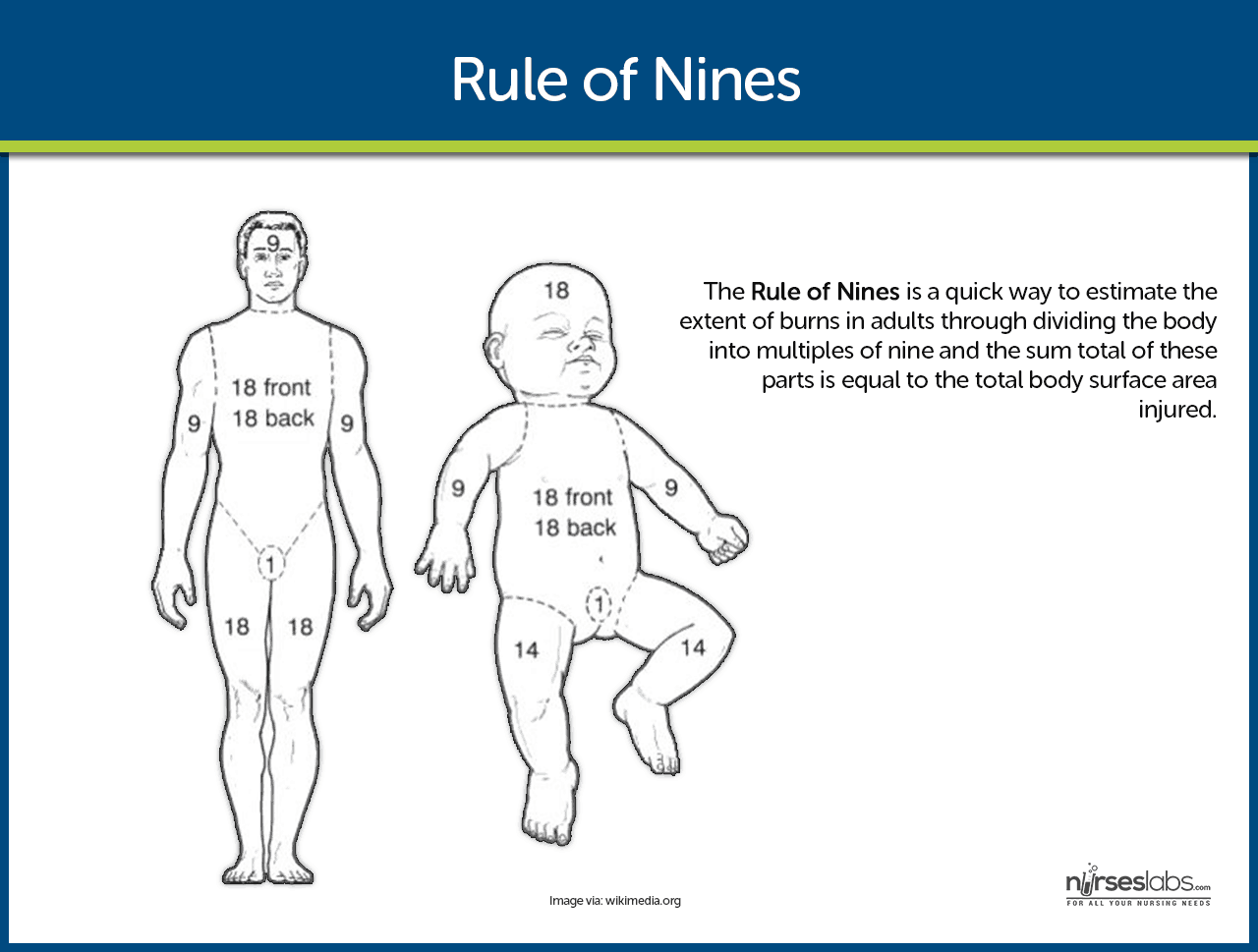


 First-degree burns usually go away within a week or so. At-home treatments may include soaking the area in cool water and dressing it with a sterile bandage. Over-the-counter pain medicines can also relieve minor burn pain.
First-degree burns usually go away within a week or so. At-home treatments may include soaking the area in cool water and dressing it with a sterile bandage. Over-the-counter pain medicines can also relieve minor burn pain. Third-degree burns often damage hair follicles, sweat glands, nerve endings, and other tissues in the skin. These burns can be severely painful. But if pain-sensing nerve cells have been damaged, there may be little or no pain at first. These burns can cause severe scarring and usually need to be treated with skin grafts.
Third-degree burns often damage hair follicles, sweat glands, nerve endings, and other tissues in the skin. These burns can be severely painful. But if pain-sensing nerve cells have been damaged, there may be little or no pain at first. These burns can cause severe scarring and usually need to be treated with skin grafts.

 Available from: https://www.chw.org/medical-care/burn-program/burns/facts-about-burn-injury
Available from: https://www.chw.org/medical-care/burn-program/burns/facts-about-burn-injury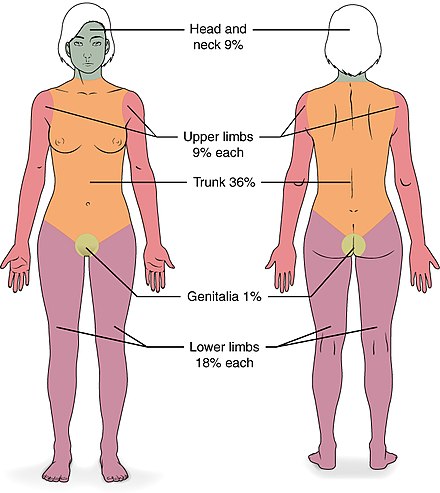 Neth J Med [Internet]. 2017 Apr [cited 2019 May 8]; 75(3):106–111. Available from: https://www.ncbi.nlm.nih.gov/pubmed/28469050
Neth J Med [Internet]. 2017 Apr [cited 2019 May 8]; 75(3):106–111. Available from: https://www.ncbi.nlm.nih.gov/pubmed/28469050 Rochester (NY): University of Rochester Medical Center; c2019. Health Encyclopedia: Burns Overview; [cited 2019 May 8]; [about 2 screens]. Available from: https://www.urmc.rochester.edu/encyclopedia/content.aspx?ContentTypeID=90&ContentID=P01737
Rochester (NY): University of Rochester Medical Center; c2019. Health Encyclopedia: Burns Overview; [cited 2019 May 8]; [about 2 screens]. Available from: https://www.urmc.rochester.edu/encyclopedia/content.aspx?ContentTypeID=90&ContentID=P01737 Management of Burns; 2003 [cited 2019 May 8]; [about 4 screens]. Available from: https://www.who.int/surgery/publications/Burns_management.pdf
Management of Burns; 2003 [cited 2019 May 8]; [about 4 screens]. Available from: https://www.who.int/surgery/publications/Burns_management.pdf These burns are associated with minimal pain due to loss of sensation, and healing typically occurs within 3 to 8 weeks with considerable scarring [6].
These burns are associated with minimal pain due to loss of sensation, and healing typically occurs within 3 to 8 weeks with considerable scarring [6].
 (2010). Prehospital Management of Burns. Accessed from: https://www.dshs.texas.gov/emstraumasystems/JA10CEArticle.pdf
(2010). Prehospital Management of Burns. Accessed from: https://www.dshs.texas.gov/emstraumasystems/JA10CEArticle.pdf Accessed from: https://www.uptodate.com/contents/overview-of-the-management-of-the-severely-burned-patient?search=burn%20treatment&source=search_result&selectedTitle=2~150&usage_type=default&display_rank=2
Accessed from: https://www.uptodate.com/contents/overview-of-the-management-of-the-severely-burned-patient?search=burn%20treatment&source=search_result&selectedTitle=2~150&usage_type=default&display_rank=2 Treasure Island (FL): StatPearls Publishing; 2020 Jan-. Available from: https://www.ncbi.nlm.nih.gov/books/NBK513336/
Treasure Island (FL): StatPearls Publishing; 2020 Jan-. Available from: https://www.ncbi.nlm.nih.gov/books/NBK513336/